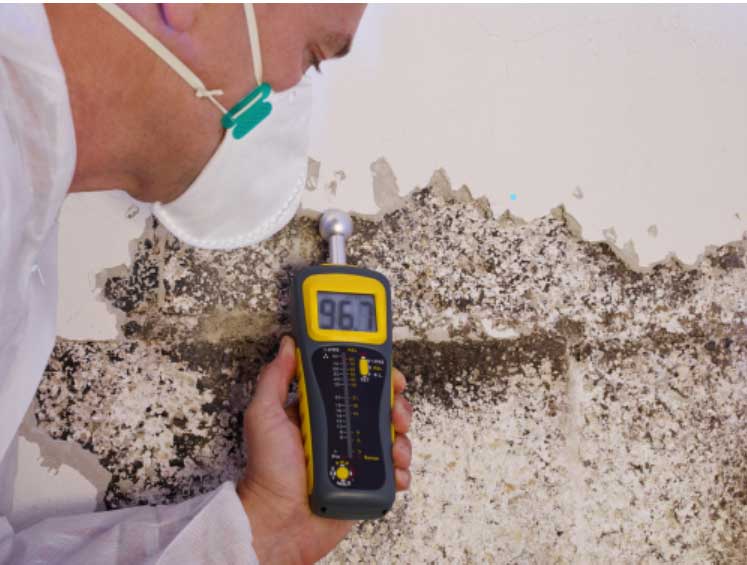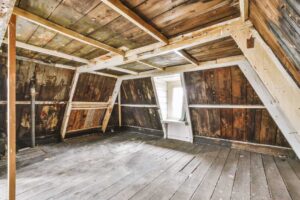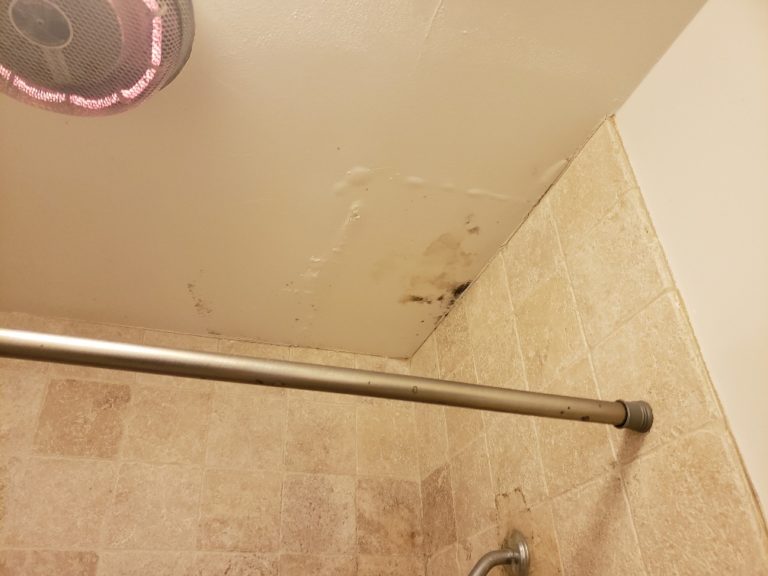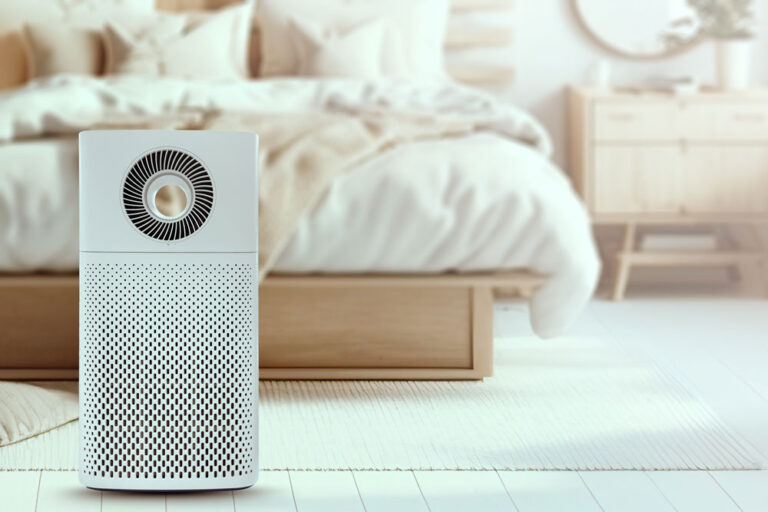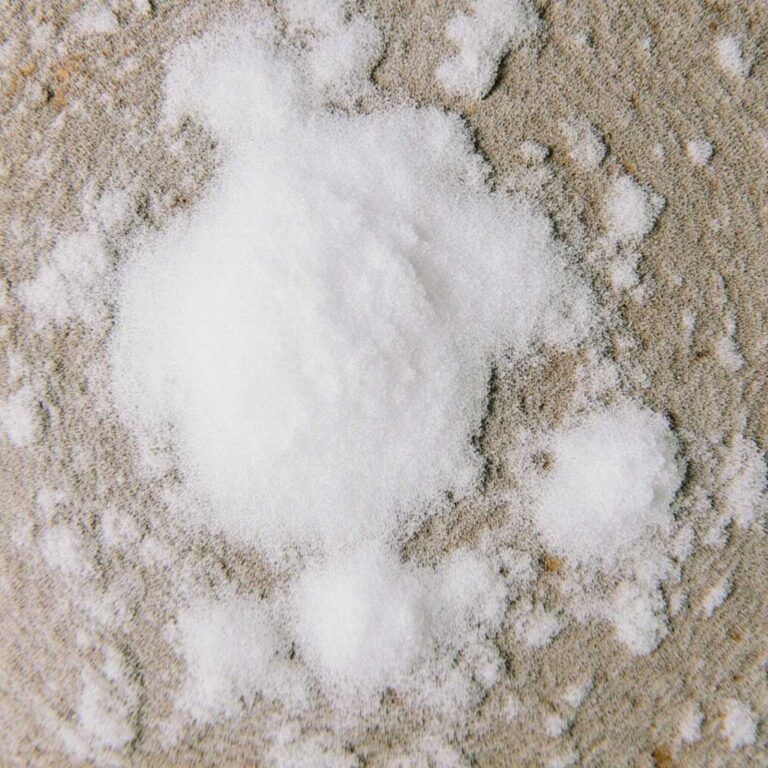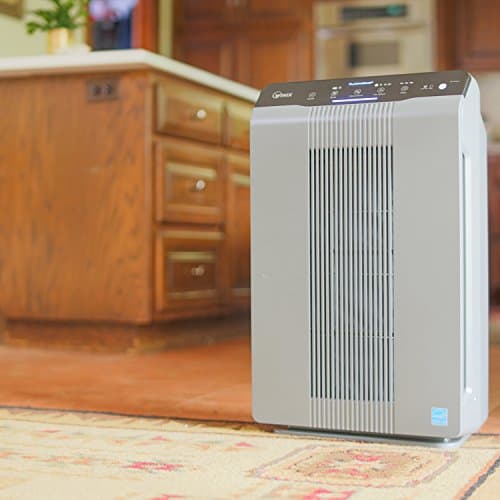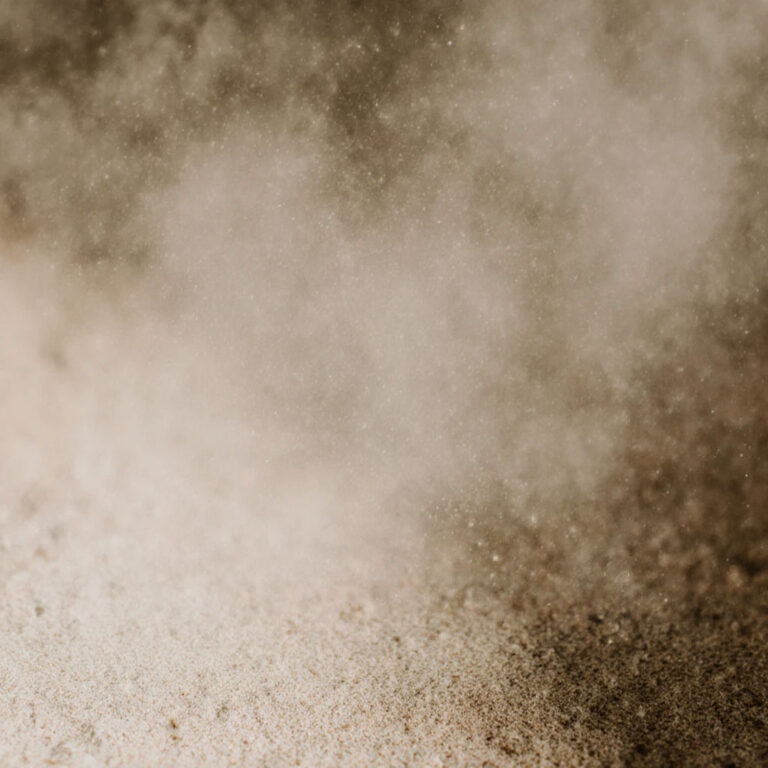Winter may bring festive cheer, but it also ushers in hidden challenges for homeowners—one of the most overlooked being mold. Contrary to popular belief, mold isn’t just a summer problem; it also thrives in the cold season when conditions like condensation, poor ventilation, and elevated indoor humidity create the perfect breeding ground.
From black mold lurking in damp corners to allergens circulating in the air, the health risks associated with winter mold exposure are significant. This post explores how mold thrives during winter months, the health concerns it poses, and actionable steps to protect your home and loved ones from its dangers.
By addressing common winter habits, understanding mold’s behavior, and following prevention strategies, you can keep your home safe and your indoor air quality pristine this season. Let’s dive in and uncover the hidden dangers of mold in winter—and how to combat them effectively.
How Does Mold Thrive in Winter Months?
While summer’s heat and humidity are often blamed for mold growth, winter creates an equally conducive environment, thanks to specific conditions that are unique to the colder season. Let’s explore the main culprits behind winter mold growth.
Condensation: The Hidden Culprit
Condensation is one of the leading factors for mold growth during winter. The clash between freezing outdoor air and warm indoor temperatures causes water vapor to condense on cold surfaces like windows, walls, ceilings, and even floors. Over time, these damp areas become the perfect breeding ground for mold.
Several factors can exacerbate condensation during winter:
- Poor Insulation: Inadequate insulation allows cold air to seep in and cool surfaces, increasing the likelihood of moisture buildup.
- Unsealed Windows and Doors: Drafty windows and doors create cold spots where condensation is more likely to occur.
- High Indoor Humidity: Without proper moisture control, activities inside the home raise humidity levels, fueling condensation.
- Lack of Ventilation: Stagnant air traps moisture indoors, increasing dampness in areas prone to condensation.
Indoor Activities That Elevate Humidity
Everyday winter habits and household activities can inadvertently raise indoor humidity, making it easier for mold to grow. Key contributors include:
- Cooking Without Ventilation: Boiling water, simmering soups, and baking release steam into the air, creating a humid environment.
- Long, Hot Showers: Without proper exhaust fans, bathroom humidity levels can spike, leading to mold in corners and on ceilings.
- Using Humidifiers Incorrectly: While humidifiers are beneficial for preventing overly dry air, overusing them can lead to excessive indoor moisture.
- Heated Indoor Pools or Hot Tubs: These luxury amenities are major sources of indoor humidity if not properly managed.
What Common Winter Habits Contribute to Mold Growth?
Winter often brings a change in household routines that inadvertently create the perfect environment for mold to thrive. Here are the most common habits that contribute to mold growth during the colder months:
1. Indoor Laundry Drying
Hanging clothes indoors releases significant moisture into the air. Without adequate ventilation, this added humidity settles on cold surfaces, creating ideal conditions for mold.
2. Poor Ventilation
During winter, homeowners often keep windows and doors shut to conserve heat, which reduces air circulation. This traps moisture indoors and increases the likelihood of damp areas that can harbor mold.
3. Storing Damp Items
Storing wet umbrellas, boots, or winter gear in enclosed spaces like closets or basements can introduce moisture to areas that are already prone to mold.
4. Ignoring Water Leaks
Small leaks in roofs, pipes, or windows are often overlooked during winter but can lead to hidden damp spots that foster mold.
5. Excessive Use of Humidifiers
While humidifiers combat dry air in winter, overuse can raise humidity levels beyond the recommended range (30-50%), encouraging mold growth.
Simple adjustments, like improving ventilation and monitoring humidity, can mitigate the risks of these common habits and help maintain a mold-free home during winter.
What Are the Health Risks of Winter Mold Exposure?
Winter mold isn’t just a nuisance; it poses significant health risks, particularly in homes where it goes undetected. Prolonged exposure to mold can have both immediate and long-term effects on your well-being. Here are some of the most common health concerns:
1. Respiratory Issues
Mold spores, when inhaled, can trigger respiratory problems, including:
- Asthma attacks in those with pre-existing asthma.
- Allergic reactions, such as coughing, sneezing, and nasal congestion.
- Irritation of the throat, lungs, and nasal passages, leading to discomfort and difficulty breathing.
2. Allergies and Hypersensitivity
Mold exposure can lead to allergic reactions, especially for individuals who are sensitive to mold. Symptoms may include:
- Watery or itchy eyes.
- Skin rashes or hives.
- Persistent sneezing and a runny nose.
3. Infections
Certain types of mold, particularly black mold (Stachybotrys chartarum), can lead to fungal infections, especially in individuals with weakened immune systems, such as the elderly, young children, or those undergoing medical treatments like chemotherapy.
4. Chronic Fatigue and Headaches
Extended exposure to mold can cause less obvious but equally concerning symptoms, such as:
- Persistent fatigue that doesn’t improve with rest.
- Frequent headaches or migraines, often caused by mold toxins in the air.
5. Aggravation of Pre-existing Conditions
Mold exposure can worsen conditions such as:
- Chronic sinus infections.
- Bronchitis or other lung conditions.
- Immune system disorders, as the body struggles to fight off mold spores.
Mold can also have psychological effects, with some studies linking long-term exposure to increased stress and anxiety levels due to its impact on overall health.
How to Identify Mold in Cold and Damp Areas
Identifying mold early is key to preventing it from spreading and causing health or structural problems. Winter’s cold and damp conditions often allow mold to hide in less obvious places, so it’s essential to know the signs.
1. Visual Inspection
Mold often reveals itself as discoloration on surfaces.
- Common Colors: Look for spots or patches ranging from white, green, and yellow to dark brown or black.
- Key Locations: Pay attention to areas prone to condensation, such as window frames, walls near exterior doors, and ceilings in poorly ventilated rooms.
2. Musty Odor
A persistent musty or earthy smell, especially in enclosed spaces like basements or closets, often signals hidden mold growth even when it’s not visible.
3. Water Stains or Damage
Peeling paint, bubbling wallpaper, or visible water stains on walls and ceilings may indicate moisture issues that could harbor mold.
4. Damp or Cold Surfaces
Areas that remain damp or cold to the touch, such as poorly insulated walls or corners of rooms, are prime spots for mold growth.
5. Condensation Buildup
Frequent condensation on windows, pipes, or uninsulated surfaces is often a precursor to mold, especially in poorly ventilated areas.
6. Health Symptoms
Unexplained allergic reactions, such as sneezing, itchy eyes, or skin irritation, may point to hidden mold. These symptoms often worsen in specific rooms or areas of the house.
By combining visual checks, attention to odors, and awareness of moisture-prone areas, homeowners can detect mold early and take action before it becomes a larger issue.
How to Prevent Mold Growth During the Cold Season
Winter may encourage mold growth, but proactive measures can keep your home mold-free. By focusing on moisture control and proper ventilation, you can create an environment that discourages mold development.
1. Use Dehumidifiers
- Control Humidity Levels: Keep indoor humidity below 60%—ideally between 30-50%.
- Target Key Areas: Place dehumidifiers in moisture-prone areas such as basements, laundry rooms, and bathrooms.
2. Ensure Proper Ventilation
- Utilize Exhaust Fans: Use fans in kitchens, bathrooms, and laundry areas to reduce moisture buildup.
- Open Windows Periodically: Even in winter, brief ventilation helps release trapped humidity.
3. Address Leaks Promptly
- Fix Plumbing Issues: Repair leaking pipes, faucets, or appliances immediately.
- Inspect Roofs and Windows: Seal cracks and fix damaged roofing to prevent water ingress.
4. Insulate Cold Surfaces
- Prevent Condensation: Insulate walls, windows, and pipes to reduce cold spots where moisture can collect.
- Use Window Treatments: Install thermal curtains to keep windows warmer and reduce condensation.
5. Clean and Dry Damp Areas
- Act Quickly: Wipe down condensation on windows or walls daily.
- Check Forgotten Spaces: Regularly dry areas like basements, attics, and crawlspaces.
6. Avoid Indoor Moisture Traps
- Dry Laundry Outside: Whenever possible, hang clothes outdoors or use a dryer vented to the outside.
- Monitor Humidifiers: Use humidifiers sparingly and set them to maintain appropriate humidity levels.
7. Apply Anti-Mold Solutions
- Use Mold-Resistant Products: Paint walls and ceilings with anti-mold paints or sealants.
- Treat Problem Areas: Regularly clean high-risk areas with mold-killing solutions like vinegar or specialized sprays.
Integrating these preventive steps into your winter routine will help you reduce the risk of mold growth significantly and maintain a healthier home environment.
Tips for Improving Indoor Air Quality in Winter Months
Maintaining clean and fresh indoor air is crucial, especially during winter when homes are sealed tightly to conserve heat. Here are actionable tips to improve indoor air quality and reduce the risk of mold and other allergens:
1. Regular Cleaning
- Dust and Vacuum Frequently: Use vacuums with HEPA filters to remove dust, mold spores, and allergens from floors and furniture.
- Wipe Down Surfaces: Clean window sills, baseboards, and corners where dust and mold can accumulate.
2. Utilize Air Purifiers
- HEPA Filters: Invest in air purifiers with HEPA filters to trap mold spores, dust, and other microscopic pollutants.
- Room Placement: Place purifiers in frequently used rooms like bedrooms and living areas for maximum effectiveness.
3. Houseplants
- Air-Cleaning Plants: Add plants like peace lilies, snake plants, or spider plants to naturally improve air quality.
- Avoid Overwatering: Prevent mold growth in soil by keeping plants on a proper watering schedule.
4. Control Humidity Levels
- Monitor with a Hygrometer: Ensure indoor humidity stays between 30-50%.
- Dehumidifiers: Use dehumidifiers in damp areas to prevent excess moisture.
5. Improve Ventilation
- Open Windows Briefly: Periodic ventilation helps release trapped pollutants.
- Exhaust Fans: Regularly use fans in kitchens and bathrooms to remove moisture and stale air.
6. Change Air Filters
- HVAC Maintenance: Replace furnace and air conditioning filters every 2-3 months.
- High-Efficiency Filters: Use filters designed to trap smaller particles, including mold spores.
7. Avoid Chemical Pollutants
- Use Eco-Friendly Cleaners: Switch to natural or low-VOC (volatile organic compound) cleaning products.
- Limit Scented Products: Reduce the use of air fresheners, candles, and sprays that may emit harmful chemicals.
8. Maintain Heating Systems
- Clean Ducts and Vents: Regularly inspect and clean heating systems to remove trapped dust and allergens.
- Service Your HVAC: Schedule annual maintenance to ensure efficient and clean air circulation.
Best Practices for Winter Mold Remediation
Winter mold problems require careful handling to prevent further spread and ensure safe removal. Here are the best practices for effectively addressing mold during the cold season:
1. Wear Protective Gear
- Gloves and Masks: Use non-porous gloves and an N95 mask to protect against mold spores during cleaning.
- Protective Clothing: Wear long sleeves, goggles, and disposable coveralls to avoid direct contact with mold.
2. Use Effective Cleaning Agents
- Mold-Specific Cleaners: Opt for EPA-registered mold removers or natural alternatives like vinegar or hydrogen peroxide.
- Avoid Bleach Alone: While bleach can remove surface mold, it may not penetrate porous materials where mold thrives.
3. Contain the Affected Area
- Seal the Space: Close doors and use plastic sheeting to isolate the area, preventing spores from spreading.
- Turn Off HVAC Systems: Mold spores can travel through air ducts if ventilation systems are running.
4. Dry and Dehumidify
- Remove Excess Moisture: Use fans, heaters, or dehumidifiers to thoroughly dry the area after cleaning.
- Prevent Recurrence: Address the moisture source, whether it’s condensation, leaks, or poor ventilation.
5. Replace Mold-Infested Materials
- Dispose of Porous Items: Items like carpets, drywall, or insulation heavily infested with mold should be discarded.
- Repair and Rebuild: Replace damaged materials with mold-resistant options like anti-mold paints or treated drywall.
6. Regular Monitoring
- Check for Recurrence: Inspect previously affected areas periodically to ensure mold has not returned.
- Invest in Tools: Use moisture meters and mold test kits to detect issues early.
7. Seek Professional Assistance
- Extensive Mold Growth: Call certified mold remediation specialists for large infestations or black mold.
- Hidden Mold: Professionals can assess areas like inside walls or under flooring where mold may not be visible.
By following these steps, you can address mold issues safely and effectively, reducing health risks and protecting your home.
FAQ: Addressing Winter Mold Concerns
1. Why is mold more common during winter months?
Mold thrives in winter due to increased indoor moisture from activities like cooking, showering, and drying clothes indoors. Poor ventilation and condensation on cold surfaces also contribute to mold growth.
2. What is the best way to prevent winter mold?
Winter mold prevention involves keeping humidity levels below 60% using dehumidifiers, ensuring proper ventilation, fixing leaks promptly, and insulating cold surfaces to reduce condensation.
3. Can black mold develop in winter?
Yes, black mold can develop in winter if moisture levels are high. Condensation, plumbing leaks, and poor airflow in damp areas create ideal conditions for its growth.
4. How can I improve indoor air quality during winter to avoid mold?
Improving indoor air quality in winter involves regular cleaning, using air purifiers with HEPA filters, maintaining proper humidity levels, and avoiding indoor drying of laundry.
5. What are the health risks of mold in winter months?
Exposure to mold in winter can cause respiratory issues, allergic reactions, and in severe cases, infections, particularly in individuals with asthma, allergies, or weakened immune systems.
6. What products can help combat mold during the cold season?
- Dehumidifiers: To control indoor humidity levels.
- Mold Test Kits: For early detection of mold presence.
- Moisture Meters: To monitor dampness in walls and floors.
- Anti-Mold Paints and Sealants: To protect walls and ceilings.
- Air Purifiers: To filter airborne mold spores.
7. How can I identify hidden mold in my home?
Look for signs like discoloration on walls, ceilings, or window frames, persistent musty odors, and areas of condensation or dampness. Consider using mold test kits or consulting professionals for thorough inspections.
8. What are the best practices for mold remediation during winter?
Wear protective gear, use EPA-approved cleaning agents, contain the affected area, and dry it thoroughly. For severe infestations or black mold, seek professional remediation services.
9. Does insulation help prevent mold in winter?
Yes, proper insulation of walls, windows, and pipes can prevent condensation, which reduces the likelihood of mold growth in cold areas.
10. Can I remediate mold myself, or should I hire a professional?
Small mold problems can often be handled with the right cleaning agents and precautions. However, for extensive infestations, hidden mold, or black mold, hiring a certified mold remediation expert is recommended to ensure safety and thorough removal.
Keep Your Home Mold-Free This Winter
Winter brings unique challenges for maintaining a healthy and comfortable home, with mold being one of the most persistent threats. By understanding how mold thrives in winter, addressing common habits that encourage its growth, and taking proactive steps to prevent and remediate it, you can protect your family’s health and your home’s integrity.
Remember, maintaining proper ventilation, controlling humidity levels, and investing in tools like dehumidifiers and air purifiers are essential for a mold-free winter. Don’t wait for visible signs—stay vigilant and act quickly to prevent mold from becoming a costly and hazardous issue.
Need Help? Contact Us!
If you’re struggling with mold problems or need expert advice, we’re here to help. Talk to us today for more tips, products, and professional services for winter mold prevention and remediation.
Stay proactive, stay healthy, and enjoy a mold-free winter season!


